
Buy
Resources
Entertainment
Magazine
Community
In This Article
Category:
Muscle Cars
Nineteen-eighty-two marked the transformation for Chevrolet's four-seat performance car. Jerry Palmer was the chief stylist for the third-generation Camaro and still calls the third generation a fabulous car. The entire design and engineering team worked together to bring about what was the best handling GM car to date. At the outset, the engineers gave the new car a 101-inch wheelbase, 187.8-inch overall length, 72-inch width and 49.8-inch height. "Chuck (Jordan) had several requirements for us when we set out to do this car: He wanted a 62-degree sloped windshield, which at the time was the steepest we'd ever done, and he wanted a one-piece side glass. Chuck would not tolerate a warmed-over second-generation car," says Palmer, now 62 and retired from his duties at GM. "He drove us to reach out and really design a new and exciting car. It was a simple statement and had a great stance. Just parked, it looked like it was ready to launch, a real street fighter."
Fred Schaafsma worked with Palmer on the third-generation car and remembers that it was the most intense project he ever worked on while at GM, before retiring three years ago. "Our focus was on handling. Not just cornering, but response and getting the body structure right. We did not just want great cornering but make the car responsive as well. We did a lot of work on the steering. Remember, we did not have rack-and-pinion steering yet and did a lot of work on the rotary valve inside the recirculating ball steering and control response tests, which were very important," he said. Schaafsma paid particular attention to the strut design, measuring hydraulic curves and stiffness, the strength of brake knuckles and spent many hours with Goodyear engineers for tire development. "Most of this work went toward the Z28, but we also wanted crisp handling on the other Camaros, such as the Berlinetta." Schaafsma also notes that many hours were devoted to ergonomics, such as shifter placement, how would it feel to the driver.

That crisp handling and emphasis on ergonomics carried all the way through to 1985, when Chevrolet debuted the IROC-Z. The same year, Chevrolet had introduced its new Tuned Port Injection, an alternative method of injection, replacing the basic Throttle Body Injection.
It probably goes without saying that "IROC" is an acronym for the International Race of Champions, a series of annual events in which drivers from all forms of motorsports compete against one another in identically prepared cars. IROC drivers had driven race-prepared Camaros since 1974. The IROC-Z was not a separate model, but was an option on the Z28, code B4Z with a cost of $695. In essence, it was a suspension package built around the 16 x 8-inch wheels and massive Goodyear tires. The IROC-Z also had louvered inserts, bolder ground effects and spoilers than a base Z28.
A true handler, the IROC-Z came with special front struts, springs and jounce bumpers, Delco-Bilstein rear shocks, special rear springs, anti-roll bar, higher effort steering, increased caster wheel alignment, front frame rail reinforcement, 16 x 8-inch aluminum wheels, Goodyear Eagle P245/50VR16 tires and special graphics. The entire package resulted in a Camaro that could pull 0.92 Gs on the skid pad and seven second 0-to-60 mph times in stock trim.
On the surface, the IROC may have looked unchanged throughout its entire run, but significant changes were taking place under the skin. Therefore, our Buyer's Guide will concentrate on the 1985 to 1987 models.
ENGINES
In 1985, the IROC's first year, the Z28's base 190hp L69 305 V-8 could still be ordered with the IROC-Z package, but was only available with a five-speed manual transmission. The 190hp engine had a bore and stroke of 3.74 inches x 3.48 inches, compression ratio of 9.5:1 and 240-lbs.ft. of torque. It breathed with a Rochester E4ME four-barrel carburetor and carried a G engine code.
Camaro engineers raided the Corvette parts bin and swiped the new Tuned Port Injection for the IROC's 305-cu.in. V-8, which made 215hp that first year. The optional TPI 305-cu.in. engine had 275-lbs.ft. of torque, with the same compression ratio as the carbureted 305. An "F" in the VIN denotes this engine. The TPI 305 could only be ordered with a four-speed automatic transmission.
In 1986, emissions regulations and a resulting revised camshaft profile resulted in a net loss of 25hp from the TPI engine. The L69 still could be ordered, but GM quietly killed that very early in the model.
The big news came in 1987, when the Camaro finally got the 350-cu.in. TPI V-8, even though records show some very late IROCs had this engine. This brute offered 220hp. However, while the new B2L engine looked identical to the Corvette's L98, it lacked the four-bolt main bearing caps and further cost cutting eliminated the Corvette's aluminum heads.
GM was prevented from designing more efficient air filtration and exhaust systems without costly emission recertification tests, so the B2L breathed through the LB9's intake and exhaust systems. Despite this, the B2L lost only 15hp to the Corvette, but set a buyer back $1,045, making it the most costly engine for a Camaro since the ZL-1's $4,000 price in 1969.
TRANSMISSIONS
There were two transmissions available for the IROC: A T-5 five-speed manual and a four-speed automatic, with the five-speed manual being standard on all 305-cu.in.-engined IROC-Zs. The four-speed overdrive automatic, a 700R4, was beefed up in late 1986 to address breakage and became an exceptional transmission. The improved 700R4 had changes to the main and auxiliary valve bodies and other components were stronger.
Additionally, the newer version had an accumulator to regulate the engagement of the forward clutch, so the shift into "D" would be smoother. Engineers also smoothed out the reverse clutch engagement so it would be stronger in "abusive" situations. The newer 700R4 also had larger splines on the input and output shafts from 27 to 30 and a 10-vane pump replaced the 7-vane pump, which resulted in more pressure, leading to firmer, quicker shifts and longer life.
The 350 V-8 required the 700R4 as the T-5 manual could not handle this engine's torque.
DIFFERENTIALS
Third-generation Camaros had some rear-end noise problems, which were cured when Chevrolet revised the torque-assembly specifications. But growling from a limited-slip differential can also be attributed to poor maintenance. Limited-slip units should have their fluid changed, including new GM additive, about every 15,000 miles. Fortunately, if the owner neglected the posi unit, a fluid change with additive normally takes care of the howling.
The mid-1980s saw a 7.68-inch 10-bolt unit installed; an Australian-built 9-bolt rear end was also available. The Aussie version was considered marginally stronger than the 10-bolt version, but has been known to break and was quite expensive to repair, so many have swapped in a 10-bolt unit. The Australian-built rear end debuted in 1987, and could be ordered with the IROC when the 350 V-8 was ordered.
SUSPENSION & BRAKES
While the TPI 350 was the big news, the IROC-Z really proved its mettle in the handling department, regardless of which engine the buyer ultimately selected. When the IROC-Z burst onto the scene in 1985 it was advertised as "the Camaro that thinks it's a Corvette." The idea behind the IROC centered around ways to take a plain Z28 and transform it into a true high-performance/handling Camaro that anyone could own without having to hold an SCCA license.
The upgrades to the suspension system made an IROC sit a half-inch lower than a standard Z28 and gave it skid pad numbers in the .90g range. The front used a modified MacPherson strut, meaning the coils did not wrap around the struts, but rather stood between a single lower A-arm and the crossmember. These gas-charged strut cartridges were made by Bilstein and were specific to the IROC. Additionally, there were lower ball joints and a front anti-roll bar. The Z28 had recirculating-ball power steering with a 12.7:1 ratio, plus limited boost to give the driver more road feel.
With all the handling improvements, the IROC-Z still soldiered on with a live rear axle. But the rear suspension had a new torque arm on the rear axle and transmission, which saved space and weight. The balance of the IROC-Z package included stiffer coil springs, gas-charged tubular hydraulic shocks, a lateral diagonal track bar and rear anti-roll bar. The brake setup on IROCs consisted of front and rear disc brakes because when ordering J65 four-wheel discs, one must have ordered the IROC option. To further complicate things, when ordering the J65 brake package, one also had to check off the G92 performance axle or 350 TPI engine. The rotors used on this system in these three years of production were 10.5 inches front and rear.
WHEELS & TIRES
The IROC-Z is one of the first American cars to wear 16-inch wheels as standard equipment. The 16 x 8-inch aluminum wheels were wrapped in massive Goodyear Eagle GT P245/50VR16 blackwall tires. The numbers don't sound big today when you can purchase a Dodge Ram pickup truck with 20-inch wheels, but they were huge in the mid-1980s.
The Goodyear Eagles tend to wear on the edges if not rotated at prescribed intervals, and even more importantly, if they aren't inflated to proper pressure. These tires are costly if you can find originals, but an exact replacement is no longer available. The correct size is available from Goodyear in a GS-C style. When looking at a third-generation Camaro, check the tires carefully. One thing to check is the front and rear wheels on a IROC, because they have different offsets, and the rear wheels are different than the fronts, so tires cannot be rotated front-to-back. In 1987, this was the last year GM used the "single indented" 16-inch wheel.
CHASSIS
All IROC-Zs, like their lesser brethren, use a front K-member or cradle bolted to a unibody. When IROC-Zs were on the assembly line, the engines were loaded into the car from underneath. Engineer Dan Beane was directly responsible for the front bolt-on crossmember.
The final design included long, tubular spacers inside the crossmember and six long bolts instead of four short ones. The inner fender area and core support are integrated with the car's body itself. A caveat of this construction is you cannot unbolt the front end and replace sheet metal if the under structure is crunched.
The chassis is susceptible to rust, but GM used some of the best anti-corrosion methods available at the time like zincrometal, which is sheet steel, which had four coatings of zinc-rich primer baked onto its surface. Rust often starts on the inside and works its way out. This process guarded against that. Third-generation cars also had extensive use of galvanized steel.
BODY
Rust in the toeboards, which was a disastrous problem in second-generation Camaros, was put on hold with extra paint and special sealers like Plastisol and hot aluminized waxes. Outer body panels used chip resistant Plastisol. Previous T-top equipped cars had water leaks, but engineers developed a new sealing material in March 1984, and it has proven to be an effective fix. Most times when water did leak in through the roof, it ran down the side glass and into the door itself, then out the drain holes, if they weren't clogged.
Paint on these cars is better if your car came from the Norwood, Ohio, factory rather than the Van Nuys, California, plant for one big reason: more strict California air pollution laws. Specifically, Van Nuys workers had to use water-based enamels in contrast to solvent-based paints in Ohio. In 1987, the year Norwood closed, the workers were putting out some of the highest quality paint jobs in the world with a new Turbo Bell paint system, which electrically charged paint to the car bodies with virtually no overspray. Norwood cars have an "N" as the 11th digit of the VIN; a Van Nuys-built Camaro has an "L" instead.
While not the first frameless glass on an American car, it was the first ever to feature a "reverse bend" rear glass meaning it was curved and had an "S" curve and was both positive and negative in the crown of the glass. "It was a major deal and I remember LOF and PPG duking it out for the contract. I think LOF won out, but PPG came along later and did some of those windows for us," Jerry Palmer notes.
INTERIOR
The interior was designed by engineers George R. Angersbach and William D. Scott. They wanted a "driver-oriented" interior, paying attention to steering and shifter position. They also wanted all instruments at the driver's fingertips, where they could be seen at all times. The new interior made rear seat passengers more comfortable than previous Camaros, where they found their knees into their chest. In the rear, the new car had two more inches of shoulder room and more knee room.
The new seats, frames made by Lear-Siegler, were comfortable, due in part to thigh support, lateral bolster adjustment, lumbar adjustment, adjustable headrests and seatback angle. Due to availability, an optional Conteur driver's seat came one per Z28. Drivers more than 6 feet 4 inches tall report the cars are quite comfortable, even on long trips. A console came standard in all Camaros and housed the shifter, power window and rear hatch controls, parking brake lever, quartz clock and rear-seat ashtray. Door panels were soft-padded vinyl and could be ordered with optional carpeted cloth on the lower half.
REPRODUCTION PARTS
Although these cars are now 20 years old, the reproduction market is lacking, says third-generation Z28 expert Mike Maciolek. Most available parts are coming from GM, but many have been discontinued. Hopefully, the reproduction aftermarket will kick in and produce needed components.
PERFORMANCE PARTS
While first- and second-generation Camaros enjoy a clogged aftermarket, IROC-Zs are coming into their own with everything available from high-performance air cleaners to ring and pinion sets.
Even though these are among the best handling and braking cars built in the mid-1980s, there are upgrades available from high-performance slotted brake rotor kits, aluminum calipers with huge pistons and high-performance brake pads. However, unlike old carbureted versions, any fuel-injected car must be modified with care. Maciolek recommends understanding the TPI or TBI units before you jump headfirst into them. The weak T-5 can be replaced with a T-56 transmission, and the rear axles are weak. If you are going to race the car, you can buy a pre-made Ford 9-inch, which is very stout or Chevrolet 12-bolt rear for a third-generation car. Expensive, but they won't break.
CHASSIS UPGRADES
Maciolek says the durability of an IROC chassis is marginal when more power is introduced. But there are many parts made today by companies such as Global West and Performance Suspension Technology, which can improve the handling of your IROC-Z.
Experts note that the single biggest improvement one can do to these cars is add sub-frame connectors. You'll want to buy the type that are welded in rather than bolted in, because there is tremendous stress that can cause the bolt holes to become larger, rendering the sub-frame connectors less effective over time. Global West makes some stronger pieces for this upgrade. The downside is they weigh about 20 pounds.
Another worthwhile upgrade are strut tower braces. Weighing just six pounds, these reduce flex. Add to that aftermarket tie-rod sleeves at $40 and you'll have stronger, adjustable pieces.
Global West also makes a steering brace, which mounts under the front anti-roll bar, yet retains stock bushing bolts and will lock the bottom of the front K cradle and keep it from moving side to side.
Recent
Wagons are arguably the most practical form of transportation. By extending the relatively low roofline of its sedan counterpart, wagons offer plenty of precious cargo space while still retaining a lower center of gravity for zippy handling and spirited driving whenever the urge may hit. Despite all the fun that can be had in a wagon, massive high-riding SUVs and Crossovers have taken over the modern-day automotive market.
The SUV trend is unstoppable and new wagon models are becoming scarcer as years pass. Back in 1975, sedans and wagons dominated nearly 80-percent of the U.S. vehicle market. More recently, new SUV and truck sales have climbed to around 80-percent since 2011, taking the place of smaller sedans and their longroof model varieties.
In the classic car market, wagons are rapidly gaining popularity. Like the old saying goes, “They don’t make them like they used to.” Classic wagons exude a style that isn’t seen in today’s automobiles and car enthusiasts are gobbling them up like candy. Here are 15 examples of what is available in the classic wagon market today.
1951 Ford Country Squire Wagon
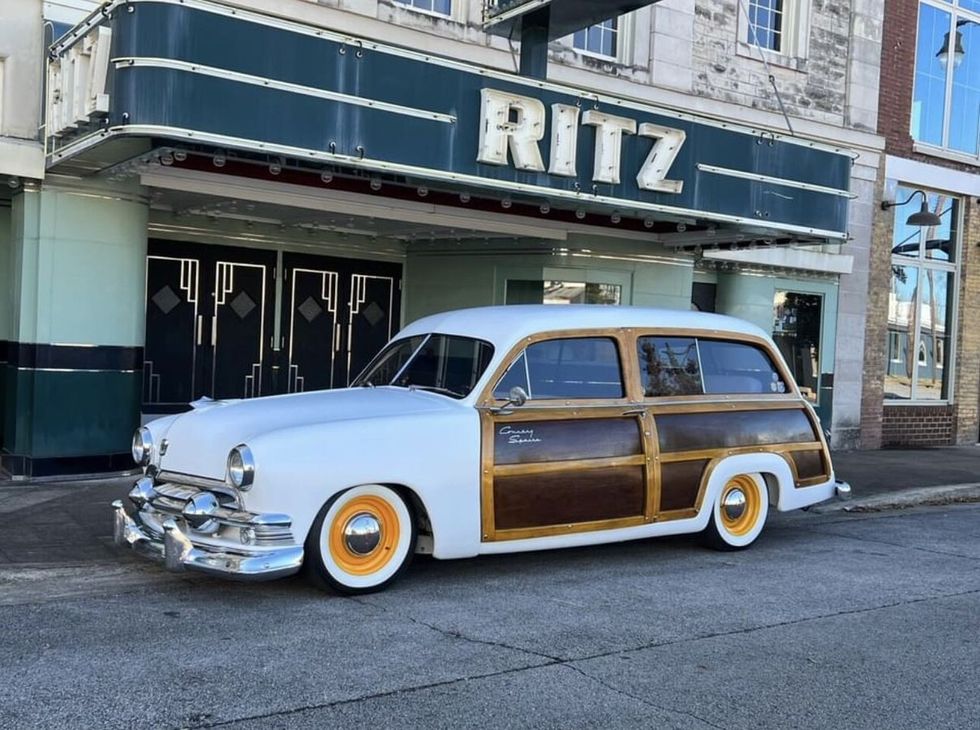
Everybody loves a classic woodie wagon! This two-door 1951 Ford Country Squire wagon still sports its original wood paneling, not that fake plasticky stuff seen on the more modern “wood” wagons. The seller states it is a fresh build that has only been driven 500 miles. A 350-cid Chevy Vortec Engine is hidden under the hood. Tasteful modifications include a Fatman Fabrications front end, an 8.8-inch rear end, power steering, four-wheel power disc brakes, and an all-new interior.
1979 Chevrolet Caprice Classic Station Wagon
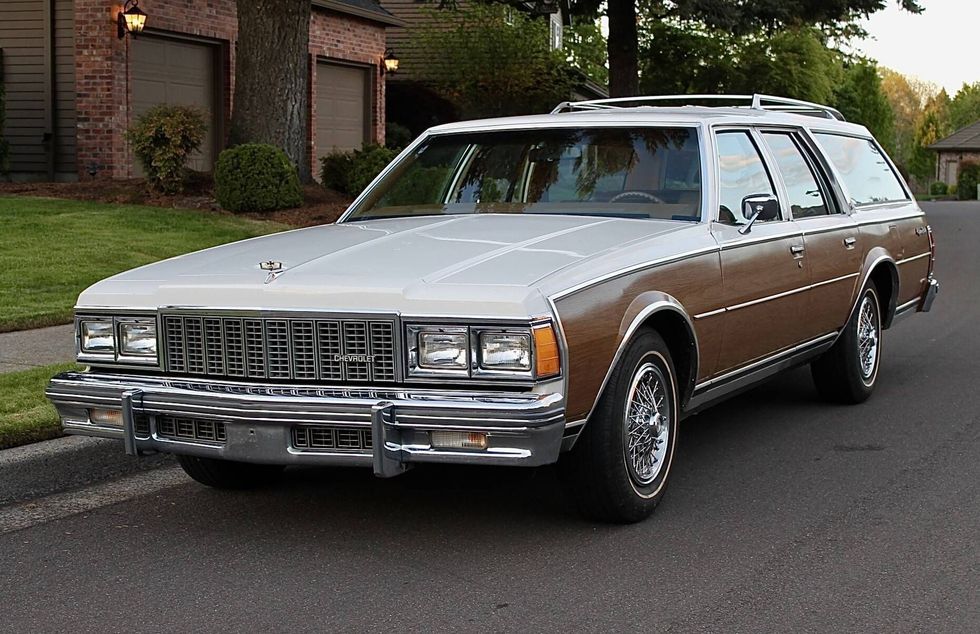
As stated in the auction listing, here’s a family hauler that would draw envious glances from Clark Griswold, this 1979 Chevrolet Caprice Classic Station Wagon is believed to be in original condition apart from maintenance and service requirements, according to the selling dealer, who acquired the woodgrain-trimmed wagon through an estate sale. There’s a 350 V8 under the hood and the seller notes service within the past few thousand miles has included new brakes, a new water pump and radiator, valve cover gasket, muffler, and more. Click here to see the full auction details.
1964 Mercury Colony Park

“Experience the epitome of vintage charm and modern performance with the 1964 Mercury Colony Park, a California wagon that's been meticulously restored and upgraded to perfection. Underneath its classic blue exterior adorned with wood paneling lies a beastly 390-cid V8 engine, now equipped with a Holley Sniper EFI system for improved fuel efficiency and smoother power delivery. Paired with an automatic transmission, this wagon delivers a driving experience that's as effortless as it is exhilarating.”
1959 Chevrolet Brookwood Nomad

This beautiful Brookwood underwent a professional frame-off custom restoration. It’s a restomod of sorts, still sporting its classic looks while implanting some modern creature comforts and technologies. It’s powered by a 480 horsepower LS3 engine paired with a six-speed manual transmission, for starters. Cruise to the classified to see more photos, plus the full list of custom goodies included in this immaculate 1959 Chevrolet Brookwood Nomad.
1964 Chevrolet Chevy II Nova Station Wagon
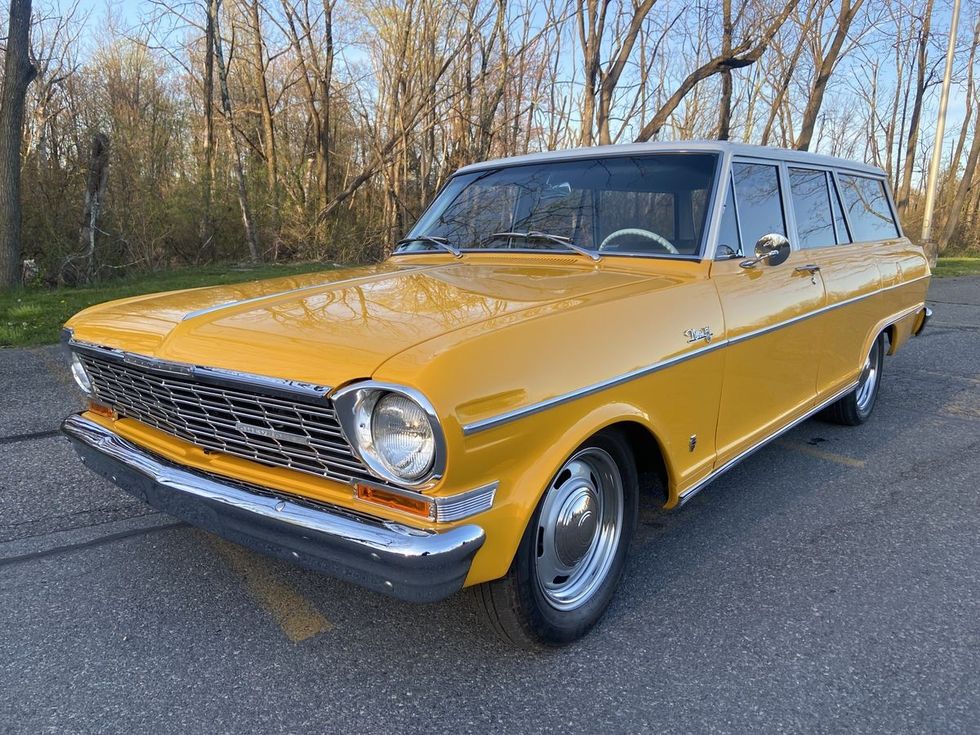
You’ll be hard-pressed to find a classic wagon exactly like this one-of-a-kind 1964 Chevrolet Chevy II Nova. Described as a mild restomod, this station wagon has just 1,000 miles accumulated since its frame-off restoration. The seller states that everything has been done on this car and it “rides, drives, and handles way better than you would expect; straight down the road with no shimmies, shakes, or vibrations.” The craftmanship on this V8-powered Chevy wagon is described as “simply spectacular.”
1963 Volvo 122S B22
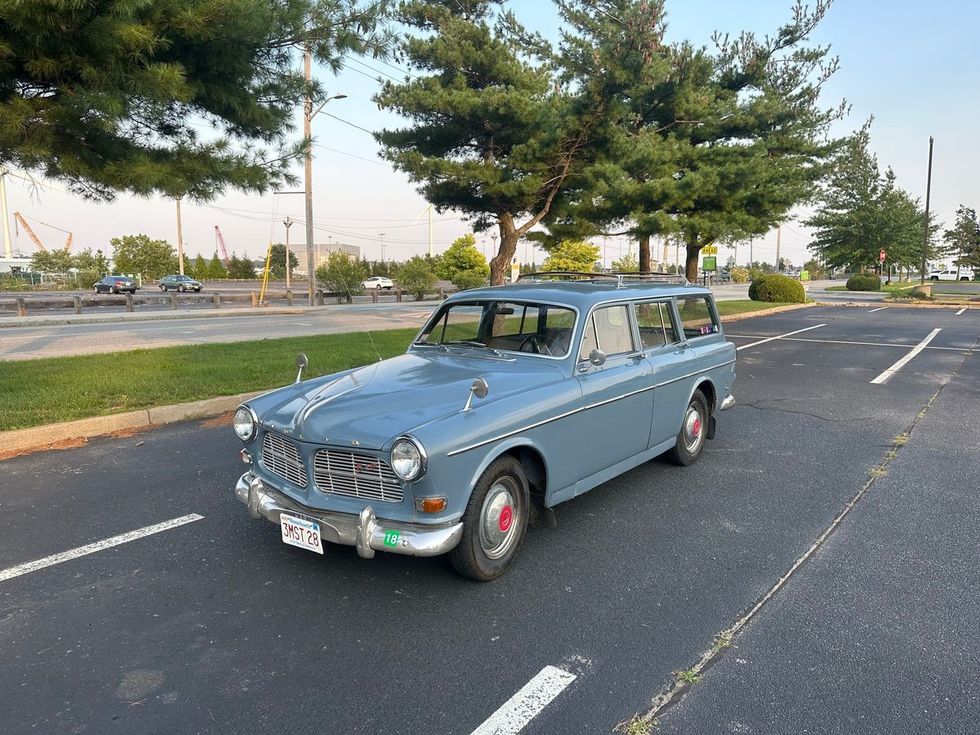
Volvo wagons are getting hard to come by, especially the 1960s-era cars. The seller states that this two-owner, mostly original 1963 Volvo 122S B22 was used as a daily commuter until a few years ago, has been regularly serviced, and is in good running condition with a recent fuel system overhaul. The original exterior does have some blemishes and surface rust, but the seller assures that “With a fresh paint job, she would really turn heads!”
1953 Willys Station Wagon
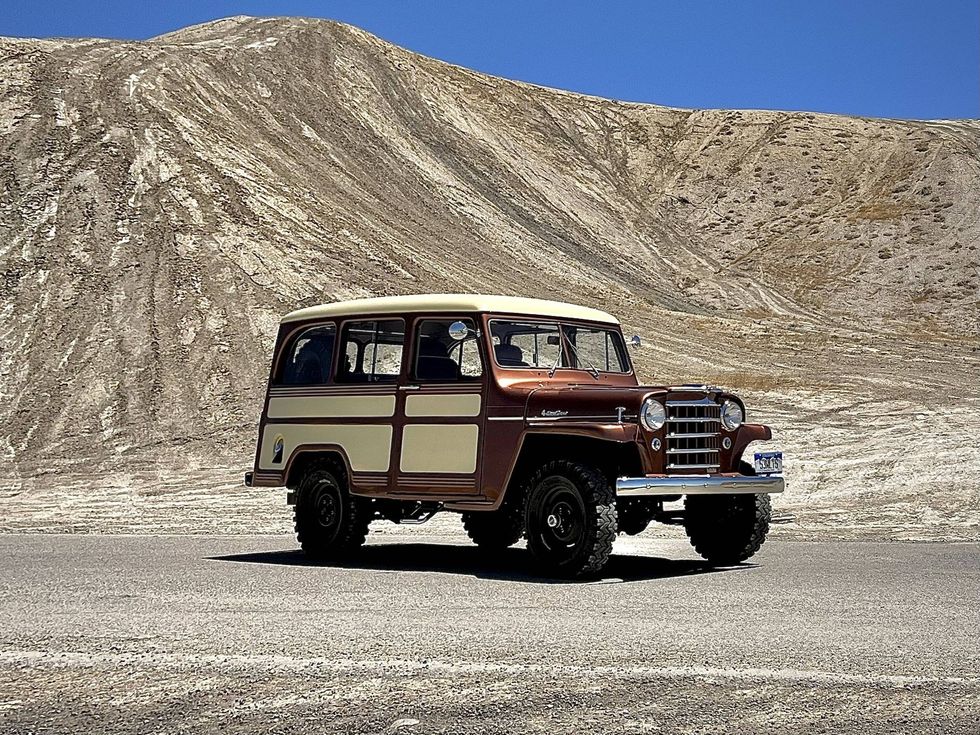
“There are refurbishments and restorations, and then there’s the kind of treatment this 1953 Willys Station Wagon has received. The work is described as a minutely detailed body-off restoration that has left the wagon in better-than-factory condition. Among the many non-production upgrades said to have been performed on this Willys are heated leather seats, a lamb’s wool headliner, a Pioneer audio system with Bluetooth capability, map lighting, and USB charging ports. The Willys is reported to have a replacement F-head engine of the same year and displacement, now rebuilt, and the wagon is described by the seller as free of rust.”
1971 Chevrolet Chevelle SS Wagon

A muscle car in wagon form is what dreams are made of, especially when talking about the second-generation Chevrolet Chevelle SS. This example, a Placer Gold 1971 Chevrolet Chevelle SS Wagon, gets its power from a rebuilt 402 cubic-inch V8 producing 350 horsepower paired with a T-10 4-speed manual transmission geared with a 10-bolt rear end, plus other great features.
1967 Buick Sport Wagon GS
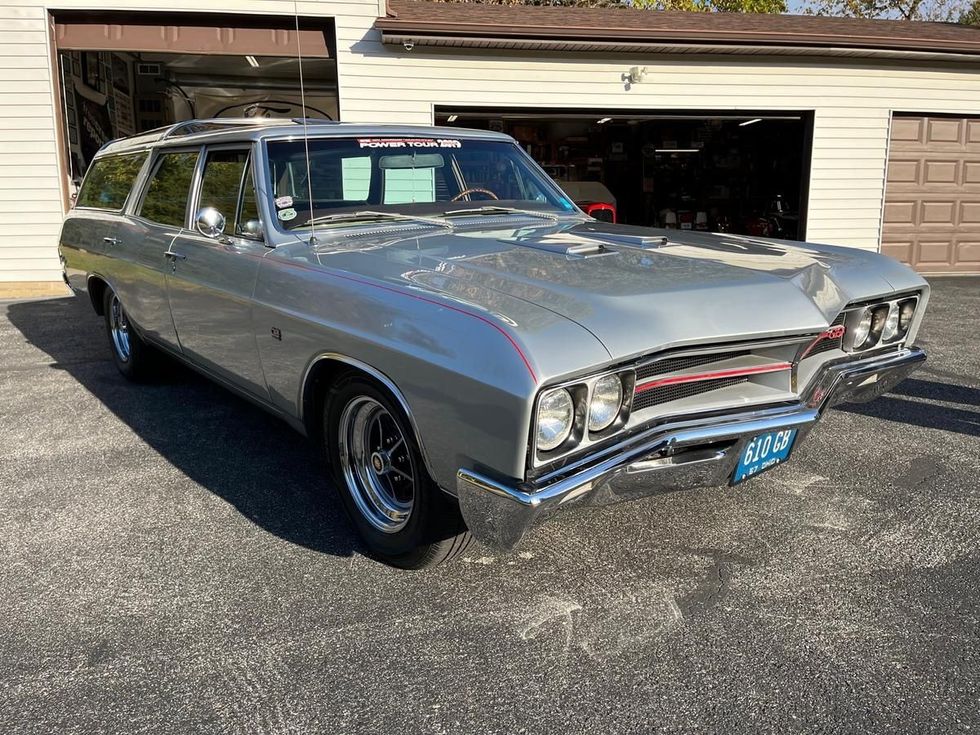
The sky roof (or panoramic roof) on this 1967 Buick Sport Wagon GS adds to this classic car’s luxurious feel. The seller states it is powered by a 350 cubic-inch small-block topped with four-barrel carbs and a Star Wars-style air cleaner. The wagon is described as rust free and ready to drive.
1956 Ford Parklane Two-Door Wagon

According to the seller of this custom 1956 Ford Parklane Two-Door Wagon, it is so clean that you can “eat off the door jams and spare tire well.” The mild custom sports a 312 cubic-inch V8 paired with an automatic transmission, plus loads of other goodies, including a custom interior. Take a close look at the photos supplied in the Hemmings Marketplace classified listing.
1959 Rambler American Deliveryman
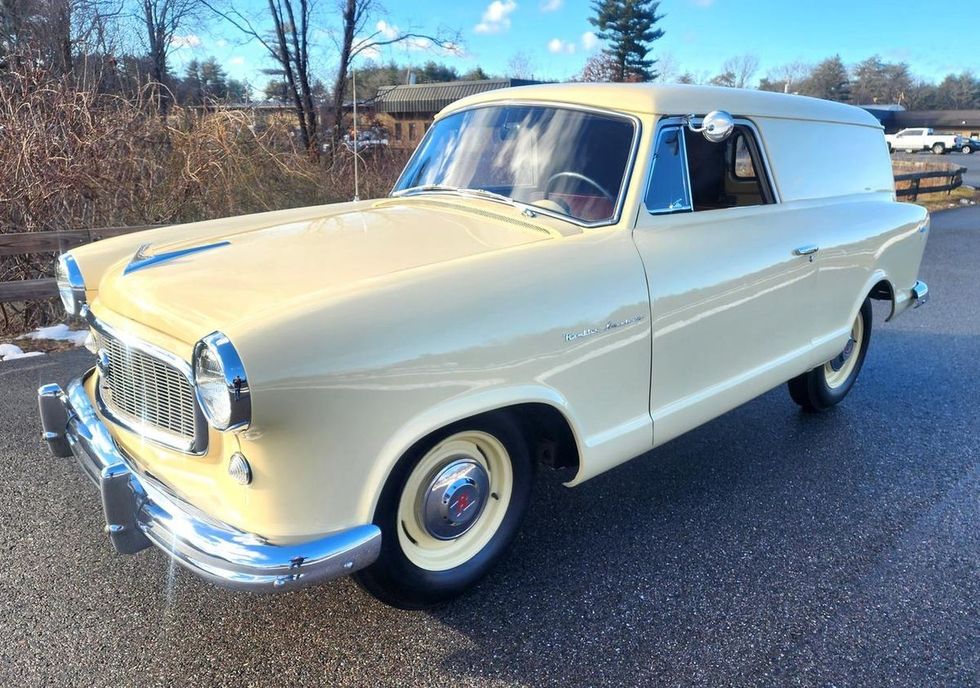
This extremely rare wagon is just one of only three examples produced, and the seller confirms that they do have the production records as proof. Previously owned and restored by the founder of the AMC club of America, the 1959 Rambler American Deliveryman Panel underwent what is described as an exceptional nut and bolt rotisserie restoration just a few years ago. It’s powered by an inline-six engine backed by a three-speed manual transmission, and the engine bay, among other details, is described as stunning.
1957 Chevrolet Bel Air

The classic Chevrolet Bel Air embodies the American Dream of the late-50s, and its V8 engine signifies the era of American muscle. This elegant wagon is offered with an automatic transmission for easy cruising. The seller also states that the 1957 Chevrolet Bel Air is equipped with air conditioning, its classic AM radio, power brakes, and power steering.
1950 Oldsmobile Wagon

If you’re searching for a wagon that will stop passersby in their tracks, look no further than this flame-adorned 1950 Oldsmobile. Under the hood you’ll find a powerful 5.7L Vortec 350 cubic-inch V8 paired with a smooth-shifting four-speed automatic transmission. The seller states, “this Oldsmobile Wagon is not just about looks and performance, it’s also equipped with a range of features designed to enhance your driving experience.” Get the full details here.
1959 Plymouth Suburban Station Wagon

This unrestored 1959 Plymouth wagon shows 78,800 original miles on the odometer. The 318 polyhead Mopar engine is topped with a Holly two-barrel carburetor and exhales through a dual exhaust system. Don’t let the main photo of this beautiful machine on a trailer fool you: The seller states that the car is in survivor condition and it drives without issues. Check it out.
1958 Edsel Roundup Two-Door Wagon

This two-door, six-passenger, V8-powered 1958 Edsel Roundup wagon is described by the seller as a no expense spared custom. The customizations were completed by its owner, Frank Montelone, alongside his long-time friend, the legendary George Barris of Barris Kustoms, which makes this custom wagon an incredibly rare find.
There are more wild wagons where these came from. As of this writing, there are around 50 classic wagon listings on Hemmings Marketplace. Take a look!
Keep reading...Show Less
Photography by Todd Ryden
Ray pile was a part of the immediate post-World War II generation of hot rodders. During the war, he was a waist gunner in Boeing B-17 Flying Fortress bombers attacking Nazi-occupied Europe and afterward he returned to his home in Southgate, California. This is his car, the Pyle Special. Not much is known about its life before Ray got ahold of the Ford. It was just one of millions of Ford Model A’s produced for 1928-’31.
Just two years after the end of the war, an uncle got him set up running a gas station. That’s when the roadster comes on the scene, and with it, Ken Eichert, the father of current owner Chris Eichert and son of Ray’s benefactor-uncle.
Image courtesy of Chris Eichert
A mild-mannered, full-fendered roadster most of the time, one weekend each month the Pyle Special would transform into a race car bent on going as fast as possible on the dry lake beds northwest of Los Angeles.

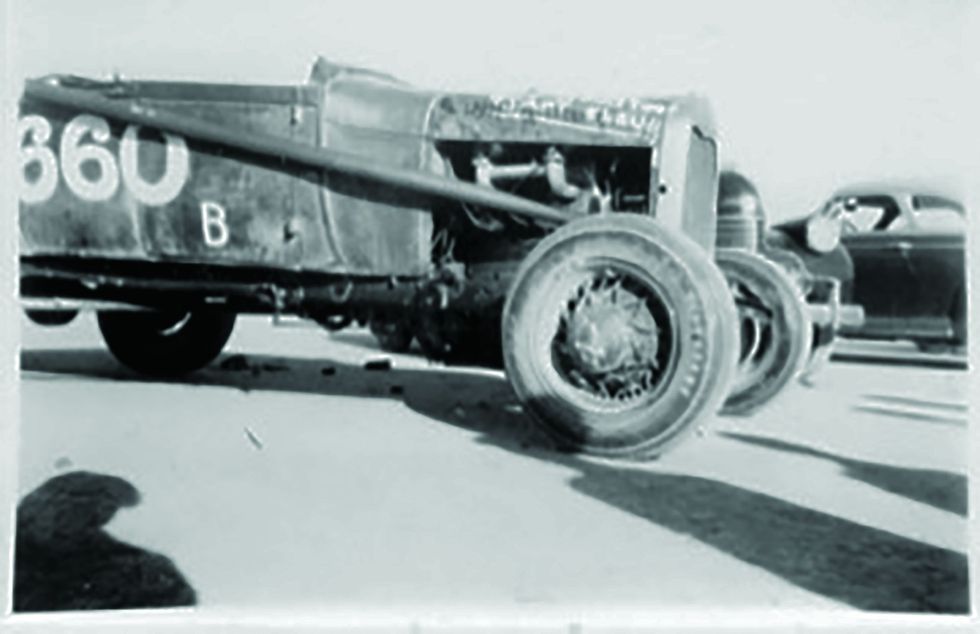

“Ray was my dad’s cousin on my grandmother’s side,” Chris says. Ken had survived a bout with polio earlier in life and was prevented from participating in most sports because of a bad leg. He discovered an outlet in the machines found at his older cousin’s shop and as an honorary member of his car club, the Gaters (note the intentional misspelling as a nod to Southgate).
“My dad was very active with Ray’s roadster. He tore it apart, worked on it, took off the fenders and installed the bomber seat for Ray to race on race day. From 1947 to 1949, Ray was going to the dry lakes with the Gaters, and the roadster was actually a dual-purpose vehicle: it ran full fendered on the street and was Ray’s get-around car, his family car, and then he would race it every month when they had a meet.”
The late hot rod historian Don Montgomery was adamant that the immediate post-World War II years represented the only pure expression of the hot rod: a true street/strip car that was driven by its owner/builder for transportation Monday through Friday and was stripped for racing on the weekends. Postwar racing for hot rods in Southern California circa 1946-’52 was largely either “the lakes”—meaning the dry lakes of the Mojave Desert, mostly El Mirage, or drag racing. At the tail end of the period, drag racing started to become formalized, on closed strips often comprised of aircraft runway infrastructure built for the war. Before that, acceleration contests were an informal activity done on public roads and facilitated by the popularity of drive-in restaurants.
Photo by Todd Ryden
This is the engine Ray raced at Santa Ana, originally built for him by Cook’s Machine Shop. Chris says it’s been drilled for full-pressure oiling, has had large valves installed, and had an unmarked but “really big” camshaft installed. It has since had fresh pistons and a milder cam installed. The Stromberg 81 carburetors are a smaller version of the 97, originally intended to equip 1937-’40 Ford 60-hp V-8 engines.



That three-faceted nature of postwar hot rods made them special and keeps them relatable today. Most roads in America are still suitable habitat for 1940s cars—whether they were new cars from 1947 or have been updated to 1940s technology. That ‘40s technology makes for a particularly satisfying operator experience—just automated enough not to be intimidating, but satisfyingly mechanical and interactive in all other respects. The sights, sounds, and smells are pure automobile, and the industrial design of every component says, “built right.”
Small wonder Chris decided to take the roadster back to how Ray had it. It even does a lot to explain why Chris’s father bought it off Ray in the mid-1960s, over a dozen years after it was last raced. It was far out of step with those times. It didn’t even have a flathead V-8. Ray had built the car to use four-cylinder power and its final engine had been a Model B unit, the 1932-’34 successor to the Model A four-cylinder and incorporating many of the popular modifications already done to make Model A engines suitable for high-performance applications.
“The motor that Ray raced with at the dry lakes was a four-banger with a two-port Riley,” Chris says. The Riley was an F-head design, or what the British and Harley-Davidson enthusiasts call “intake over exhaust,” meaning the exhaust valves retain their stock location in the block, but the intake valves are relocated overhead and actuated by pushrods and rocker arms. Even in flathead form, Model A and B four cylinders were respected for their off-the-line performance while the Ford V-8 was capable of greater top-end speed. An OHV or F-head conversion on a four-cylinder usually meant it was capable of keeping up with a flathead V-8 even at those higher RPMs. Chris would love to someday replicate that engine, which he and Ken discovered in derelict condition shortly after Ray’s death in 1987 and deemed unsalvagable.
The roadster’s final outings were to what was then Santa Ana airport. The first modern dragstrip began operation there in the spring of 1950 and Ray quit driving the Pyle Special about 1951. It didn’t move again until 1964 or ’65, when Ray sold it to Ken, who in turn held onto the car more as a keepsake than an active project. As a child, Chris would sneak into the freestanding garage where it was stored and sit in it and later it would provide plenty of father/son bench racing and swap-meet parts buying episodes.
Aside from one brief-but-memorable ride, the car sat in storage until 2007. By that point, it had suffered a couple indignities: its engine sold off to a friend’s speedster project and one fender and splash apron were brutally disfigured in a freak accident involving a large stack of tile.
“My dad was getting older. I told him I wanted to get the roadster going and he told me to bring it over. I took it completely apart and I cleaned off decades and decades of dirt. I actually saved some of it, thinking it was probably El Mirage dirt. I have two cigar vials full.”
That cleaning and disassembly venture was a crash course in postwar-era hot rodding.
Photo by Todd Ryden
The front axle was dropped back in the 1940s and installed on the roadster circa 1950. To further lower the roadster, the spring eyes were reversed on both the front spring and in the rear.




“Nothing was precisely done. It was a real trip to see what hot rodders did back then and how they put stuff together. It truly was like going back all those years. Then seeing how it evolved in the late ‘40s into the ‘50s in old pictures, as it became what it is today.
“I ended up buying the motor back from the friend with the speedster. I told him what we were going to do, and he did not hesitate to sell it back to us. I had a friend of my dad’s rebuild the motor.”
Chris then re-installed all the speed parts that had come from Ray, plus a few his father had collected along the way, notably twin Stromberg 97 two-barrel carburetors on an Evans intake and a Mallory dual-point distributor. Chris also discarded Ray’s rear-only mechanical brake setup for 1939 Ford hydraulic brakes contributed by a friend of his father. “That’s the kind of friends my dad had,” he says. “All his hot rod friends knew about the roadster and when I told them I was working on it, they gave him stuff.”
Once the roadster was going, there followed a whirlwind of father-son activity with it, culminating in the twin delights of a Hot Rod Magazine feature story of the still-in-primer roadster, and Ken getting to drive the roadster at El Mirage for the first time ever. Then, Ken died in 2011 and the roadster took another hiatus.
“After Dad died, it sat. I could not get the motor running for snot. I took it to three or four old guys who worked on old Model A’s, hot rod guys, they couldn’t get it running. I kept spending money to no result, so I mothballed it for another 10 or 12 years, from 2011 to about a year or so ago.”
Photo by Todd Ryden
“It’s a rattle can, but the coolest rattle can you could ever be in. I still drive it and have memories of my dad and wish he were there and could share the moments. Even though I didn’t know Ray, I think of him. He got this up to 116 mph and that’s a feat. I’ve probably gone no faster than 65 mph and it scared me, I couldn’t imagine doing 116.”



For help, Chris turned to a fellow member of the revived Gaters club, welder/fabricator and hardcore enthusiast of midcentury Americana, Randy Pierson.
“He’s got a period army tent, a period camp stove, he tows his roadster with a ’49 Merc four-door. The body on his roadster is all handmade. He is the pinnacle for our group who keeps us true to that era and what we do and what we don’t do and what we put our signature on as a club as far as being period correct.
“He did some body work (but he said it was one of the nicest Model A bodies he’d ever worked on). It was all hand welded, hand hammered, hand finished. We stripped off down to the color that was consistently across most of the body. He rewired it with cloth wire as it would it have been in period, and he really was meticulous to getting it back to as it was in 1947. We looked at pictures. He kept what he could keep and mimicked what needed to be done to make it true to its 1940s life.”
Also mimicking its 1940s life was the scramble to get it ready for race day. In this case, the West Coast iteration of The Race of Gentlemen, which is not a beach race but is instead held at Flabob Airport in Riverside, California, in the style of the original Santa Ana drags.

Although it still rides on a Model A frame, at some point the k-shaped crossmember from a 1932 Ford was installed, which stiffens the chassis slightly and provides built in mounts for the later transmission and floor pedals. Ray apparently lacked the tools to shorten the driveshaft, however, which pushed the engine and transmission forward slightly. During the rebuild, Chris and Randy moved the radiator back to its stock position to run an original-style hood.
Photo by Todd Ryden
“We found a bomber seat and just a couple weeks before the race, Randy had started to work on the motor to get it running and he too could not get it running right. He pulled it apart and he’s not a motor guy, but he knows enough, and one of his neighbors is an old hot rodders. We changed out the 97s to 81s because the 97s were a lot of carburetor for that little banger motor, especially in duals. Then he still had a hard time. We took out the cam, put in adjustable lifters, and at the very last second, we were trying to find a different cam for it, because we figured there was something going on with the cam. I asked a buddy if he had anything to go in my roadster and he sold me a cam and I sent all that up to Randy, who worked on it feverishly for a week to ship it back down for the races. He got it running and when he got to drive it down the street, he was surprised. ‘This thing has got it. This thing scoots.’ It runs really strong.”
That strong running paid off in a lot of fun at TROG West, giving truth to one more of Ken’s old stories.
“My daughter has a video of me racing a T/V-8 and I pass the camera behind the T, but by the time I get to the finish line, I’ve beat her. It brings back memories of my dad telling me ‘Yeah, that motor will beat some V-8’s.’ It’s one of those moments, again, of my dad’s stories from all those years ago having proof in their pudding. Those revelations keep happening.”
What’s next for this old racer? “I never did get it registered when I moved from California to Texas,” Chris says, “but I am going to get it registered.”
Hopefully, it will be back on the streets soon, paying tribute to that triple-threat nature of hot rodding’s golden era.
Photo by Todd Ryden
“We reproduced the tailpipe that’s on it from pictures. It’s built from 1938 driveshaft enclosures because of the taper they have at one end. When Ray was racing it, that’s one of the things my dad put on it every time, so that’s what we did when we were putting it back together. It’s got a killer, throaty sound to it.”


Keep reading...Show Less









